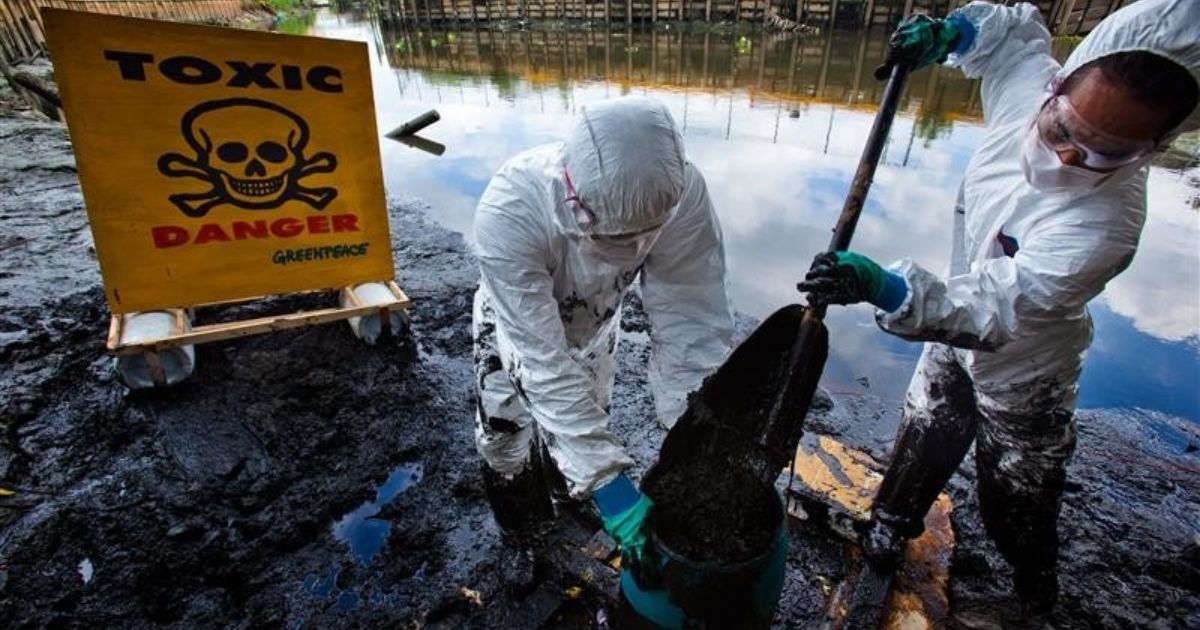In the realm of waste management, the question arises: is it bad to burn trash? This seemingly coincidental inquiry delves into the profound health risks associated with inhaling pollutants found in waste disposal sites. By exploring the impact on the respiratory system, long-term consequences, and ways to minimize exposure, this article aims to inform and advocate for cleaner air in these areas. Join the conversation as we delve into the research, regulations, and community initiatives surrounding this critical issue.
Key Takeaways
- Exposure to waste pollutants can lead to adverse health effects, including respiratory issues, chronic diseases, and an increased risk of cancer.
- Waste disposal sites contain toxic chemicals like heavy metals, solvents, and pesticides, which can contaminate the air, soil, and water, affecting overall air quality.
- Landfills contain toxic chemicals like lead, mercury, and cadmium that can cause neurological and developmental disorders, while VOCs like benzene and toluene found in landfills are carcinogenic and can cause respiratory problems.
- Prolonged exposure to airborne trash particles can have detrimental effects on the respiratory system, including reduced lung capacity, chronic cough, difficulty breathing, and emotional responses like disgust, frustration, and anger.
Health Risks Associated With Inhaling Trash
The inhalation of trash poses significant health risks. When we breathe in trash, we expose ourselves to various types of waste pollutants, leading to adverse health effects. Common types of waste pollutants include particulate matter, volatile organic compounds (VOCs), heavy metals, and toxic gases. These pollutants can originate from different sources, such as industrial emissions, vehicle exhaust, and burning of waste materials. Exposure to these pollutants can have detrimental effects on our respiratory system, cardiovascular system, and overall well-being.
Particulate matter, for example, can penetrate deep into our lungs, causing respiratory issues and worsening existing conditions like asthma. VOCs and heavy metals are known to have toxic effects on our organs and can contribute to the development of chronic diseases. Inhaling toxic gases, such as carbon monoxide, can lead to asphyxiation or even death. Clearly, the inhalation of trash presents significant health risks that should not be taken lightly.
Types of Pollutants Found in Waste Disposal Sites
Waste disposal sites contain a wide range of toxic chemicals, including heavy metals, solvents, pesticides, and other hazardous substances. These pollutants can contaminate the air, soil, and water, leading to a significant impact on the overall air quality in the surrounding area. Breathing in these pollutants can pose serious health risks, such as respiratory problems, cardiovascular issues, and even an increased risk of cancer.
Toxic Chemicals in Waste
In waste disposal sites, exposure to toxic chemicals poses a significant health risk. Landfills, in particular, are known to contain a wide range of hazardous substances that can have detrimental effects on human health. Some of the toxic chemicals commonly found in landfills include:
- Heavy metals such as lead, mercury, and cadmium, which can cause neurological and developmental disorders.
- Volatile organic compounds (VOCs) like benzene and toluene, which are known to be carcinogenic and can lead to respiratory problems.
- Polychlorinated biphenyls (PCBs), which were used in electrical equipment and can cause severe skin rashes, liver damage, and even cancer.
Exposure to these toxic chemicals can occur through inhalation of the contaminated air, ingestion of contaminated water or soil, or direct contact with the waste materials. It is essential to understand the health risks associated with landfill pollution and take necessary precautions to mitigate them.
Impact on Air Quality
Exposure to waste disposal sites can result in the inhalation of harmful pollutants, jeopardizing air quality and posing significant health risks. Waste disposal sites are known to contribute to air pollution due to the release of various types of pollutants. These pollutants can include gases such as methane and carbon dioxide, as well as volatile organic compounds (VOCs) and particulate matter. Methane is a potent greenhouse gas that contributes to climate change, while carbon dioxide is a major driver of global warming. VOCs are chemicals that can have detrimental effects on human health, causing respiratory diseases and other health issues.
Particulate matter, consisting of tiny particles suspended in the air, can also lead to respiratory problems when inhaled. Overall, the presence of waste disposal sites can have a significant negative impact on air quality, highlighting the need for effective waste management practices to minimize these pollutants and protect public health.
Health Risks Involved
Inhaling pollutants from waste disposal sites can lead to significant health risks, as these sites release various types of harmful substances into the air. Exposure to these pollutants can have detrimental effects on both the cardiovascular system and respiratory health. Some of the key pollutants found in waste disposal sites include:
- Particulate matter (PM): Fine particles suspended in the air, such as dust, soot, and ash, can penetrate deep into the lungs and cause respiratory problems.
- Volatile organic compounds (VOCs): These chemicals can irritate the respiratory system and contribute to the development of respiratory diseases.
- Heavy metals: Toxic substances like lead, mercury, and arsenic can accumulate in the body and have adverse effects on cardiovascular health.
The impact on the cardiovascular system and the increased risk of respiratory diseases make it crucial to address the health risks associated with inhaling pollutants from waste disposal sites.
Impact of Trash Inhalation on the Respiratory System
Numerous studies have shown that prolonged exposure to airborne trash particles can have detrimental effects on the respiratory system. Inhalation of trash particles can lead to various respiratory diseases and significantly impact lung function. The table below highlights some of the potential consequences of breathing in trash:
| Impact on Lung Function | Respiratory Diseases | Emotional Response |
|---|---|---|
| Reduced lung capacity | Asthma | Disgust |
| Chronic cough | Chronic bronchitis | Frustration |
| Difficulty breathing | Pneumonia | Anger |
These effects on the respiratory system can be distressing and have a profound impact on one’s quality of life. It is crucial to address the issue of trash inhalation to protect the health and well-being of individuals and communities. By raising awareness and implementing proper waste management practices, we can work towards creating cleaner and healthier environments for everyone.
Long-Term Consequences of Breathing in Trash
The prolonged inhalation of trash particles can result in significant long-term consequences for the respiratory system. Breathing in trash pollutants can lead to a range of detrimental effects that can persist over time. Some of the long-term effects include:
- Chronic respiratory conditions: Prolonged exposure to trash particles can lead to the development of chronic respiratory conditions such as asthma, bronchitis, and chronic obstructive pulmonary disease (COPD).
- Reduced lung function: Inhaling trash pollutants can impair lung function, making it more difficult to breathe and reducing the overall capacity of the lungs.
- Increased risk of respiratory infections: Breathing in trash particles can weaken the immune system in the respiratory tract, making individuals more susceptible to infections.
To minimize the long-term effects of breathing in trash pollutants, it is crucial to implement prevention measures such as proper waste management, recycling, and using protective masks in polluted environments. By taking proactive steps to reduce exposure, individuals can safeguard their respiratory health and minimize the risks associated with breathing in trash pollutants.
Now, let’s explore ways to minimize exposure to trash pollutants.
Ways to Minimize Exposure to Trash Pollutants
To minimize exposure to trash pollutants, several measures can be taken. First, implementing indoor air filtration systems can help remove airborne particles and improve air quality. Second, efficient waste management practices such as proper disposal and recycling can reduce the amount of trash pollutants in the environment. Lastly, the use of personal protective equipment, such as masks and gloves, can provide a physical barrier against direct contact with harmful substances. These strategies, when combined, can help mitigate the risks associated with breathing in trash pollutants.
Indoor Air Filtration
One effective method for minimizing exposure to trash pollutants indoors is by implementing an efficient air filtration system. Indoor air quality can be significantly improved by using air purifiers that are specifically designed to capture and remove airborne pollutants, including those generated from trash. These devices work by trapping particles and contaminants, such as dust, pollen, pet dander, and odors, thereby reducing their presence in the air we breathe. Here are three key benefits of using an air filtration system for trash pollutants:
- Removal of harmful particles: An efficient air filtration system can effectively capture and remove fine particles and toxic substances that may be present in the air due to trash, preventing them from being inhaled.
- Reduction of odors: Air purifiers with activated carbon filters can help eliminate unpleasant odors caused by trash, ensuring a more pleasant and fresh indoor environment.
- Improved respiratory health: By reducing the presence of airborne pollutants, an air filtration system can help mitigate respiratory issues and allergies, promoting better overall health.
Implementing an air filtration system is a proactive step towards maintaining a clean and healthy indoor environment, minimizing the risks associated with breathing in trash pollutants.
Waste Management Practices
To minimize exposure to trash pollutants, it is important to implement effective waste management practices. One of the key practices is waste segregation, which involves separating different types of waste at the source. By sorting waste into categories such as recyclables, organic waste, and non-recyclables, it becomes easier to handle and dispose of waste in an environmentally friendly manner. Proper landfill management is also crucial in minimizing exposure to trash pollutants. This involves ensuring that landfills are constructed and operated in a way that prevents the leakage of harmful substances into the surrounding environment, such as through the use of liners and regular monitoring.
By implementing these waste management practices, we can significantly reduce the amount of pollution and potential health risks associated with trash. Moving forward, it is important to consider additional measures such as personal protective equipment to further protect individuals from the potential hazards of trash pollutants.
Personal Protective Equipment
In order to minimize exposure to trash pollutants, it is essential to utilize personal protective equipment (PPE). PPE serves as a barrier between individuals and potentially harmful substances found in trash. Here are three important pieces of PPE that can help mitigate the risks associated with trash pollution:
- Respiratory protection: Wearing a mask or respirator can prevent inhalation of airborne particles and harmful gases emitted by trash.
- Gloves: Properly fitting gloves provide a protective barrier against direct contact with trash, reducing the risk of exposure to hazardous materials.
- Protective clothing: Wearing coveralls or disposable suits can prevent skin contact with pollutants, minimizing the chances of absorption.
Additionally, it is crucial to follow proper disposal methods when handling trash to further minimize exposure. This includes using designated bins and containers, segregating waste correctly, and ensuring proper waste management practices are in place. By utilizing personal protective gear and adopting proper disposal methods, individuals can reduce their exposure to trash pollutants and protect their well-being.
Effects of Trash Inhalation on Children and Vulnerable Populations
Regular inhalation of trash can have detrimental effects on the health of children and vulnerable populations. The impact on cognitive development and the increased risk of respiratory diseases are some of the significant concerns. Children, with their developing bodies and immune systems, are particularly vulnerable to the harmful effects of trash inhalation. The toxic substances present in trash, such as heavy metals and chemicals, can impair their cognitive development and hinder their ability to learn and thrive.
Additionally, the pollutants released from decomposing trash can cause respiratory diseases, including asthma and bronchitis, in children and other vulnerable populations. It is crucial to address this issue to ensure a safe and healthy environment for everyone, especially those who are most susceptible to the negative consequences of trash inhalation.
Research Studies on the Health Effects of Breathing in Trash
Numerous research studies have been conducted to investigate the detrimental health effects associated with inhaling trash. These studies have shed light on the types of pollutants present in trash and their potential impact on human health. Some key findings include:
- Airborne pollutants: Trash contains a wide range of substances, including toxic chemicals, heavy metals, and microbial contaminants. When waste is improperly managed, these pollutants can become airborne and pose a significant risk to respiratory health.
- Respiratory problems: Exposure to trash-related pollutants has been linked to various respiratory issues, such as asthma, bronchitis, and chronic obstructive pulmonary disease (COPD). These respiratory problems can significantly impact the quality of life and overall well-being of individuals.
- Waste management: Proper waste management practices, such as waste segregation, recycling, and proper disposal, play a crucial role in reducing the health risks associated with breathing in trash. Effective waste management can help minimize the release of harmful pollutants into the air, thereby protecting public health.
Understanding the findings from these research studies is vital for policymakers and waste management authorities to develop strategies that prioritize public health and minimize the adverse effects of trash inhalation.
Environmental Regulations and Waste Management Practices
Environmental regulations and waste management practices are essential for mitigating the health risks associated with inhaling trash. Waste disposal regulations play a crucial role in ensuring that trash is handled and disposed of safely. These regulations outline specific guidelines and procedures for waste collection, transportation, and disposal, aiming to minimize the negative impact on human health and the environment. Pollution control methods are also employed to limit the release of harmful substances during waste management processes.
This includes implementing advanced technologies, such as incineration or landfill gas capture systems, to reduce air pollution and the emission of greenhouse gases. Additionally, waste management practices focus on promoting recycling and composting, which not only reduce the volume of waste but also minimize the need for landfill disposal. By adhering to these regulations and implementing effective pollution control methods, communities can greatly improve air quality and protect public health.
Tips for Maintaining Clean Air in Waste Disposal Areas
To ensure clean air in waste disposal areas, it is important to implement effective measures for maintaining air quality. These measures can help in preventing air pollution and ensuring a healthier environment for workers and nearby communities. Some tips for maintaining clean air in waste disposal areas include:
- Regular monitoring of air quality levels to identify any potential issues or sources of pollution.
- Implementing proper ventilation systems to ensure adequate airflow and reduce the concentration of harmful pollutants.
- Following waste disposal regulations and best practices to minimize the release of pollutants into the air.
By adhering to these tips and incorporating air pollution prevention strategies, waste disposal areas can significantly reduce their impact on air quality and contribute to a safer and cleaner environment.
Keywords: air pollution prevention, waste disposal regulations.
Advocacy and Community Initiatives for Cleaner Air Around Trash Sites
Efforts to improve air quality around trash sites have sparked advocacy and community initiatives aimed at reducing the negative impact of waste disposal on nearby communities. Community engagement and public awareness play crucial roles in these initiatives, as they help to mobilize individuals and organizations towards the common goal of cleaner air. Through community engagement, residents and community leaders can work together to identify the specific air quality concerns in their area and develop strategies to address them.
This can involve organizing community clean-up events, advocating for stricter regulations on waste management, and promoting the use of sustainable practices. Public awareness campaigns are also important in informing residents about the potential health risks associated with breathing in trash and encouraging them to take action. By fostering a sense of belonging and shared responsibility, these advocacy and community initiatives can create lasting change and improve air quality for everyone in the surrounding areas.
FAQ,s
What Are the Short-Term Effects of Breathing in Trash?
Breathing in trash can have short-term effects on respiratory health, leading to symptoms such as coughing, wheezing, and difficulty breathing. Additionally, it can have an impact on cardiovascular health, increasing the risk of heart disease and stroke.
Can Inhaling Trash Lead to Respiratory Diseases Such as Asthma or Bronchitis?
Inhaling trash can have detrimental effects on respiratory health, potentially leading to lung damage and an increased risk of respiratory diseases such as asthma or bronchitis. Proximity to waste disposal sites may further amplify these risks in nearby communities.
Are There Any Specific Pollutants Found in Waste Disposal Sites That Are Particularly Harmful to Human Health?
Long-term exposure to pollutants in waste disposal sites can have detrimental effects on human health. Studies have shown that certain pollutants found in trash, such as heavy metals and toxic chemicals, can lead to respiratory diseases and other health issues. Additionally, improper waste disposal can have a significant negative impact on the environment, further exacerbating the potential health risks.
How Long Does It Take for the Respiratory System to Recover After Inhaling Trash?
The recovery time for the respiratory system after inhaling trash can vary depending on the specific pollutants involved. Prolonged exposure to pollutants can have long-term effects, including respiratory diseases and decreased lung function.
Are There Any Specific Measures Individuals Can Take to Protect Themselves From Trash Pollutants in Waste Disposal Areas?
Preventive measures should be taken to protect individuals from trash pollutants in waste disposal areas. Breathing in trash can pose significant health risks. It is crucial to implement effective strategies to minimize exposure to harmful pollutants and maintain a healthy living environment.
Conclusion
In conclusion, inhaling trash can have detrimental effects on our health, particularly on the respiratory system. The pollutants found in waste disposal sites pose serious risks and can lead to long-term consequences. However, by implementing effective waste management practices, minimizing exposure to trash pollutants, and advocating for cleaner air, we can work towards creating a healthier environment for everyone. Let us strive to breathe in fresh air and leave behind the harmful impacts of trash inhalation.










